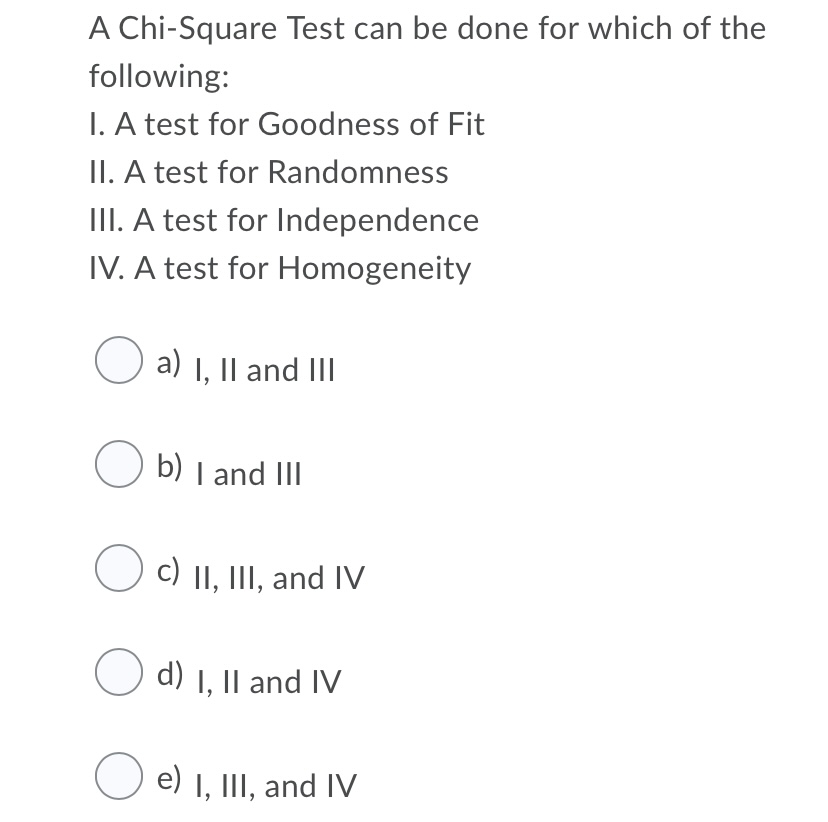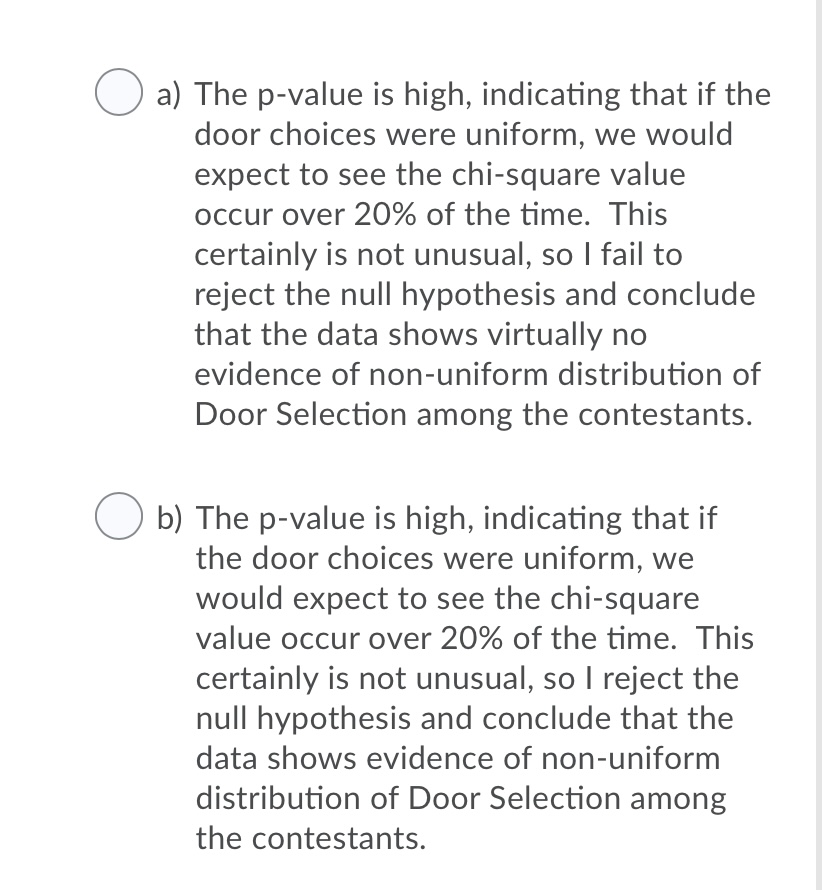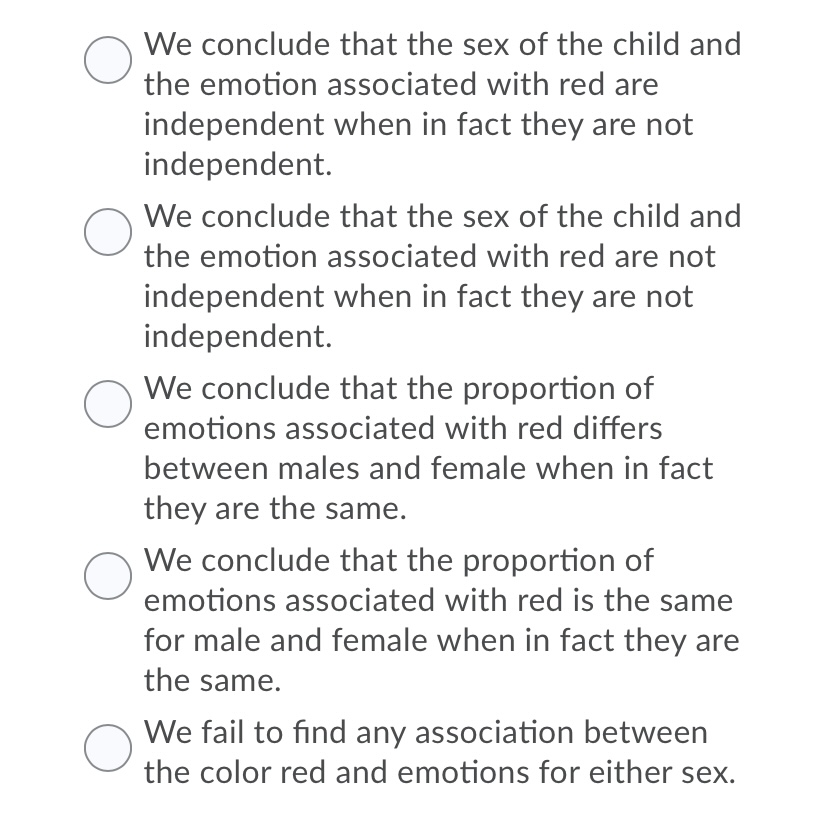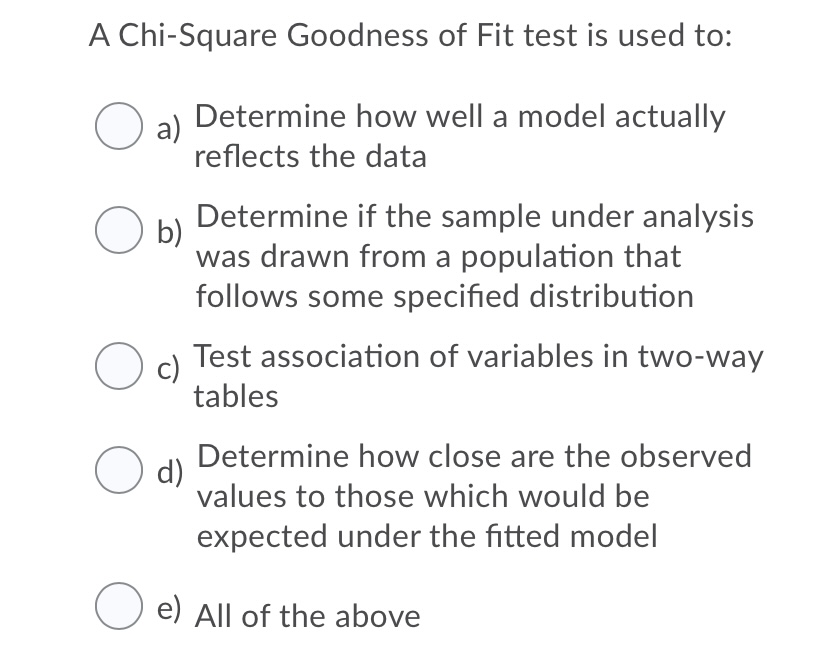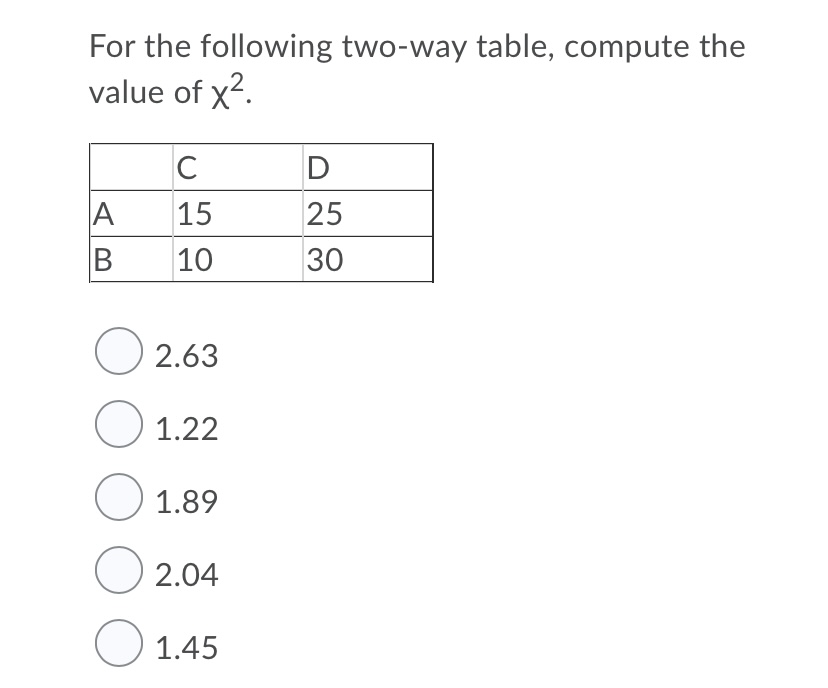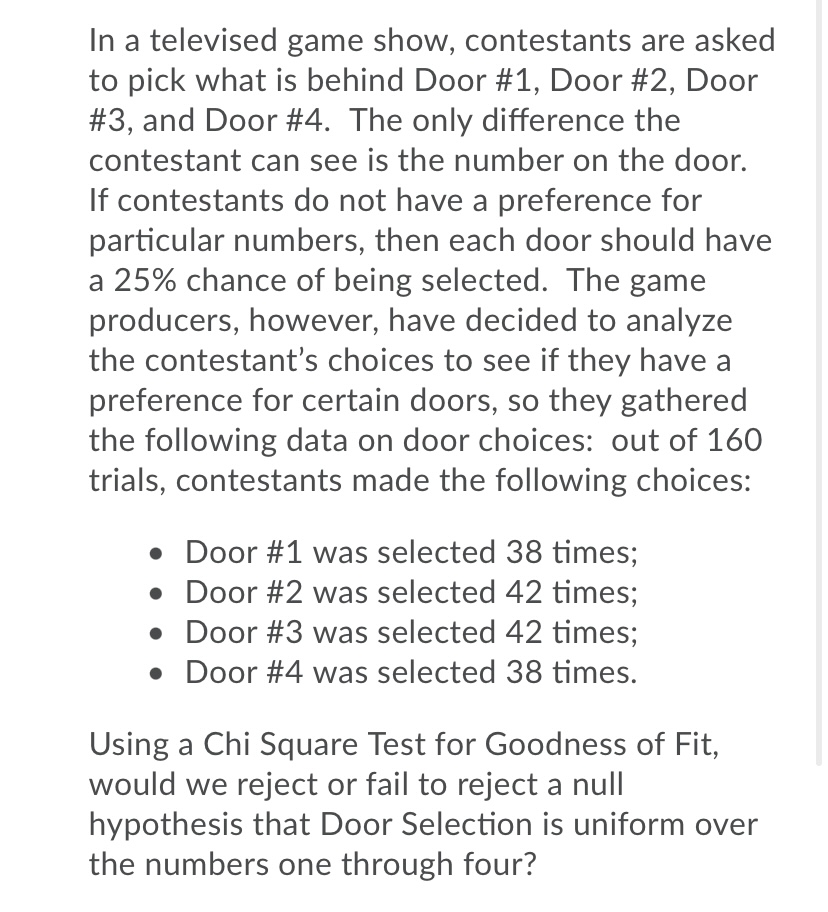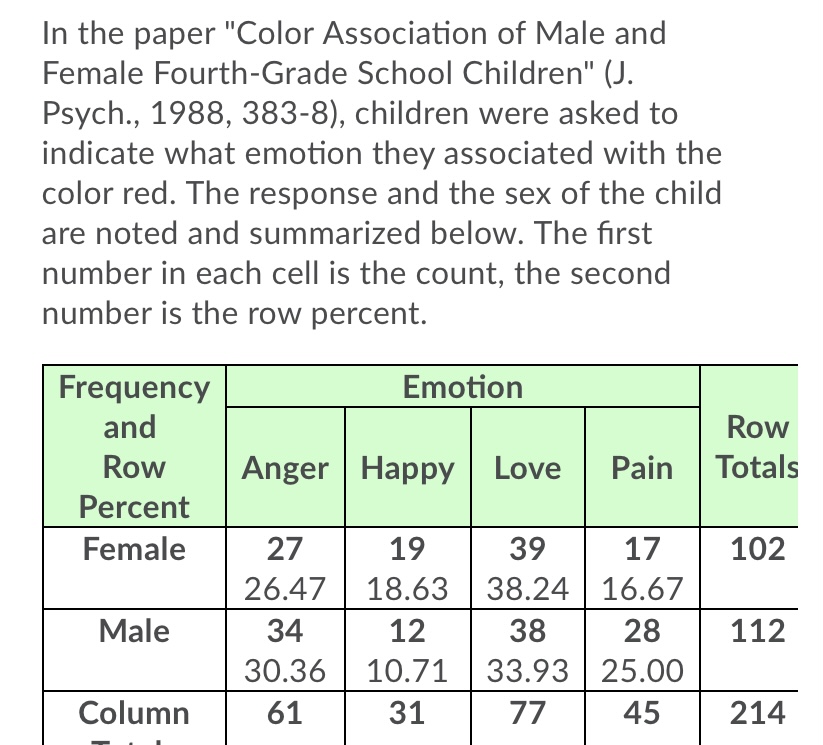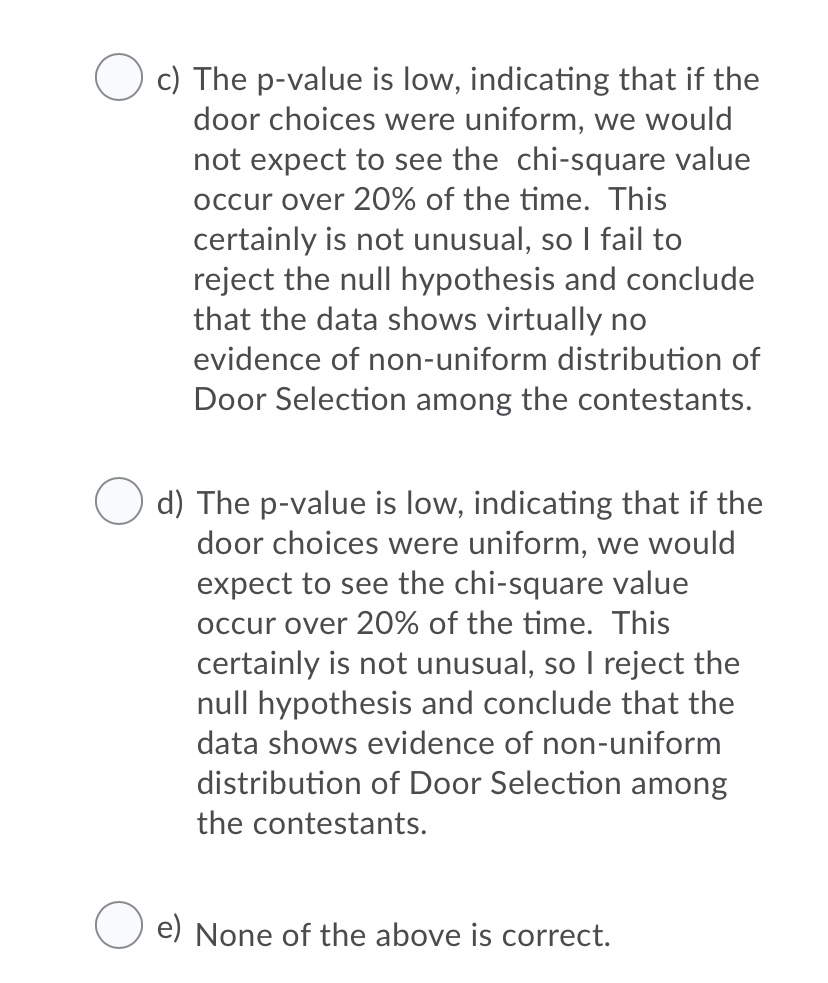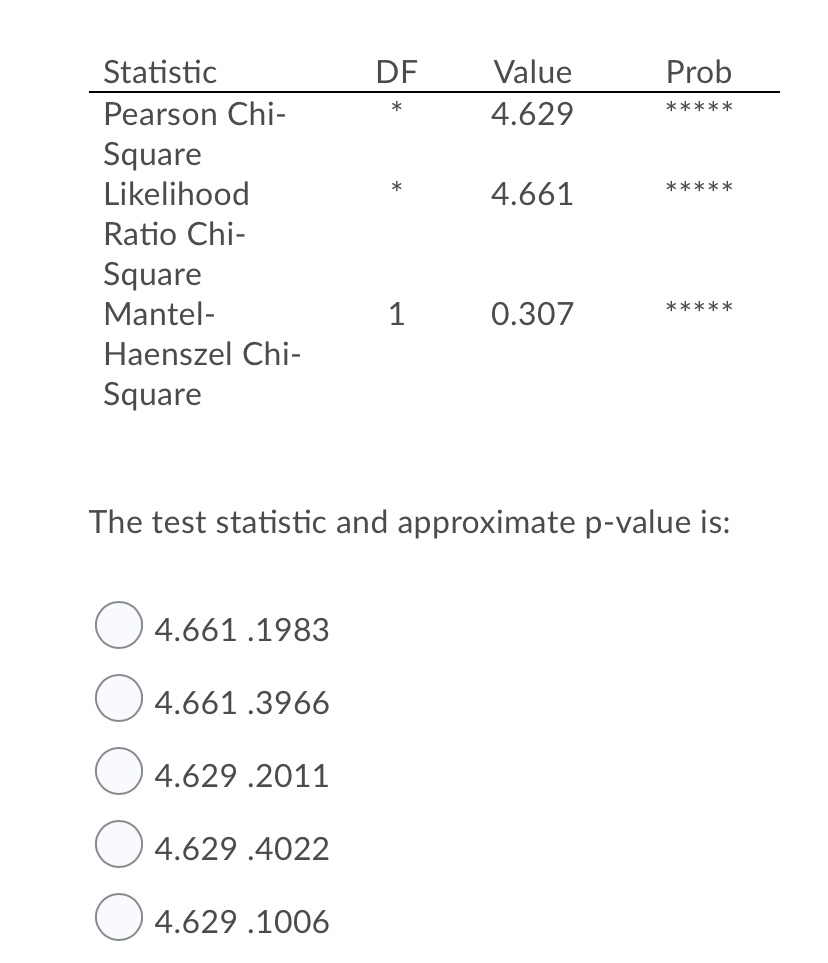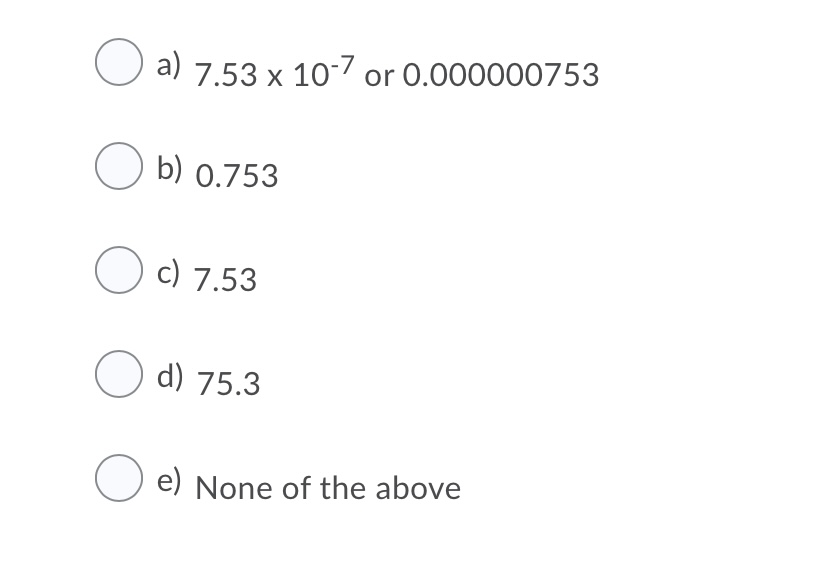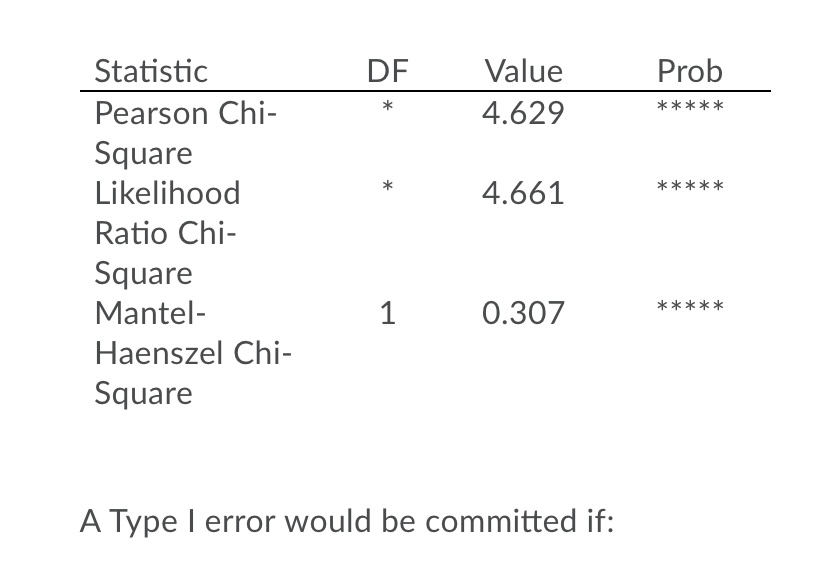Ap statisitc Unit 13
9)
A Chi-Square Test can be done for which of the following: I. A test for Goodness of Fit II. A test for Randomness Ill. A test for Independence IV. A test for Homogeneity (a) 1, II and Ill b) I and Ill O c) 11, Ill, and IV O d) 1, 11 and IV e) 1, Ill, and IV\fO a) The p-value is high, indicating that if the door choices were uniform, we would expect to see the chi-square value occur over 20% of the time. This certainly is not unusual, so I fail to reject the null hypothesis and conclude that the data shows virtually no evidence of non-uniform distribution of Door Selection among the contestants. O b) The p-value is high, indicating that if the door choices were uniform, we would expect to see the chi-square value occur over 20% of the time. This certainly is not unusual, so I reject the null hypothesis and conclude that the data shows evidence of non-uniform distribution of Door Selection among the contestants. We conclude that the sex of the child and the emotion associated with red are independent when in fact they are not independent We conclude that the sex of the child and the emotion associated with red are not independent when in fact they are not independent 0 We conclude that the proportion of emotions associated with red differs between males and female when in fact they are the same. 0 We conclude that the proportion of emotions associated with red is the same for male and female when in fact they are the same. 0 We fail to nd any association between the color red and emotions for either sex. In the paper "Color Association of Male and Female Fourth-Grade School Children" (J. Psych., 1988, 383-8), children were asked to indicate what emotion they associated with the color red. The response and the sex of the child are noted and summarized below. The first number in each cell is the count, the second number is the row percent. Frequency Emotion and Row Row Anger Happy Love Pain Totals Percent Female 27 19 39 17 102 26.47 18.63 38.24 16.67 Male 34 12 38 28 112 30.36 10.71 33.93 25.00 Column 61 31 77 45 214 TotalsA Chi-Square Goodness of Fit test is used to: O a ) Determine how well a model actually reflects the data O b ) Determine if the sample under analysis was drawn from a population that follows some specified distribution O ) Test association of variables in two-way tables O d ) Determine how close are the observed values to those which would be expected under the fitted model O e) All of the aboveA group separated into men and women are asked their preference toward certain types of candy bars. The following table gives the results. Non- Chocolate Chocolate Men 20 5 Women 12 3 Which of the folowing statements are true? I. The variables gender and candy bar types are independent. II. For these data, x2 = 0. III. The variables gender and types of candy bars are related. In a televised game show, contestants are asked to pick what is behind Door #1, Door #2, Door #3, and Door #4. The only difference the contestant can see is the number on the door. If contestants do not have a preference for particular numbers, then each door should have a 25% chance of being selected. The game producers, however, have decided to analyze the contestant's choices to see if they have a preference for certain doors, so they gathered the following data on door choices: out of 160 trials, contestants made the following choices: Door #1 was selected 25 times; Door #2 was selected 60 times; Door #3 was selected 55 times; Door number 4 was selected 20 times. How many degrees of freedom do we use in this example if we want to do 3 Chi Square Test for Goodness of Fit? \fIn a televised game show, contestants are asked to pick what is behind Door #1, Door #2, Door #3, and Door #4. The only difference the contestant can see is the number on the door. If contestants do not have a preference for particular numbers, then each door should have a 25% chance of being selected. The game producers, however, have decided to analyze the contestant's choices to see if they have a preference for certain doors, so they gathered the following data on door choices: out of 160 trials, contestants made the following choices: Door #1 was selected 38 times; Door #2 was selected 42 times; Door #3 was selected 42 times; Door #4 was selected 38 times. Using a Chi Square Test for Goodness of Fit, would we reject or fail to reject a null hypothesis that Door Selection is uniform over the numbers one through four? In the paper "Color Association of Male and Female Fourth-Grade School Children" (J. Psych., 1988, 383-8), children were asked to indicate what emotion they associated with the color red. The response and the sex of the child are noted and summarized below. The first number in each cell is the count, the second number is the row percent. Frequency Emotion and Row Row Anger Happy Love Pain Totals Percent Female 27 19 39 17 102 26.47 18.63 38.24 16.67 Male 34 12 38 28 112 30.36 10.71 33.93 25.00 Column 61 31 77 45 214O c) The p-value is low, indicating that if the door choices were uniform, we would not expect to see the chi-square value occur over 20% of the time. This certainly is not unusual, so I fail to reject the null hypothesis and conclude that the data shows virtually no evidence of non-uniform distribution of Door Selection among the contestants. Q d) The p-value is low, indicating that if the door choices were uniform, we would expect to see the chi-square value occur over 20% of the time. This certainly is not unusual, so I reject the null hypothesis and conclude that the data shows evidence of non-uniform distribution of Door Selection among the contestants. 0 e) None of the above is correct. In a televised game show, contestants are asked to pick what is behind Door #1, Door #2, Door #3, and Door #4. The only difference the contestant can see is the number on the door. If contestants do not have a preference for particular numbers, then each door should have a 25% chance of being selected. The game producers, however, have decided to analyze the contestant's choices to see if they have a preference for certain doors, so they gathered the following data on door choices: out of 160 trials, contestants made the following choices: Door #1 was selected 25 times; Door #2 was selected 60 times; Door #3 was selected 55 times; Door #4 was selected 20 times. What is the p-value in a Chi Square Test for Goodness of Fit? Statistic DF Value Prob Pearson Chi- * 4.629 * * * * * Square Likelihood * 4.661 * * * * * Ratio Chi- Square Mantel- 1 0.307 * * * * * Haenszel Chi- Square The test statistic and approximate p-value is: 4.661 .1983 4.661.3966 4.629 .2011 4.629 .4022 4.629 .1006A controversial issue in sports is the use of the "instant replay" for making decisions on plays that are extremely close or hard to call by an ofcial. A survey of players in each of four professional sports was conducted, asking them if they felt "instant replays\" should be used to decide close or controversial calls. The results are as follows: Instant Replay Sport Favor Oppose 22 18 Basketball 15 3 In testing to see whether opinion with respect to the use of instant replays is independent of sport, a table of expected frequencies is found. In this table, the expected number of professional baseball players opposing the use of instant replays is equal to: \f\f\fStatistic DF Value Prob Pearson Chi- 4.629 * * * * * Square Likelihood 4.661 * * ** * * Ratio Chi- Square Mantel- 1 0.307 * * * * * Haenszel Chi- Square A Type I error would be committed if
